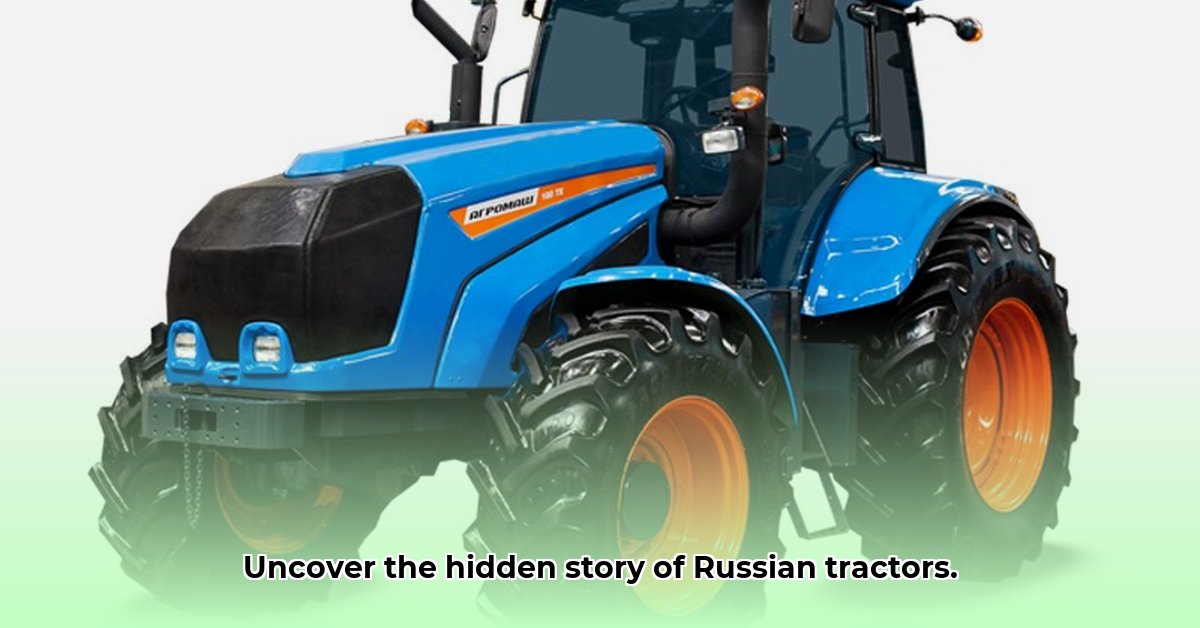
The rumble of a Soviet-era tractor, a mechanical behemoth chugging across a vast field, speaks volumes about ambition, ingenuity, and the often-unforeseen consequences of a centrally planned economy. Their story is one of impressive production figures juxtaposed with significant technological shortcomings – a captivating narrative woven into the very fabric of Soviet agricultural history. For a deeper dive into tractor history, see this short history of tractors here.
The Early Days: From Imitation to Industrial Giant
The Soviet Union's drive to modernize agriculture began in the early 20th century. Initially reliant on foreign designs, particularly those of the Fordson tractor, Soviet engineers embarked on a journey of reverse engineering and adaptation. This led to the creation of the Putilovets, an iconic workhorse that became a symbol of the era. However, imitation was merely a stepping stone. The Soviets rapidly built massive tractor factories—industrial behemoths in cities like Stalingrad, Kharkiv, and Chelyabinsk—transforming the nation into a significant producer of agricultural machinery. By the 1930s, production was booming. Remarkably, by 1937, Soviet combine harvester output surpassed that of the United States – a testament to the scale of their industrial ambition. But this quantitative success masked a qualitative deficit.
The Challenges: A Gap in Innovation and Efficiency
Despite the impressive production numbers, Soviet tractors often lagged behind their Western counterparts in terms of efficiency and innovative design. Fuel consumption was notoriously high; these machines were gas-guzzlers, increasing operating costs. Design flaws resulted in frequent breakdowns and high maintenance requirements, adding to the burden on collective farms. World War II further compounded these issues, inflicting significant damage on the burgeoning industry and setting back progress considerably. A simple increase in numbers, it became clear, was not enough; durability and technological advancement were equally, if not more, critical.
Central Planning's Grip: A Double-Edged Sword
The Soviet planned economy profoundly shaped tractor development and deployment. This system provided the impetus for rapid initial industrialization, prioritizing production targets over long-term innovation and responsiveness to the needs of the farmers who used the machinery. While this approach initially yielded impressive production figures, it ultimately stifled innovation and adaptability. Decisions regarding what type of tractors to produce were made by central planners, not the farmers themselves, leading to a disconnect between the machinery and its actual application on the ground.
A Lasting Legacy: A Complex Tapestry
The long-term impact of Soviet tractor production on agriculture is multifaceted and complex. While output increased to some extent, the economic efficiency remains a subject of ongoing debate among economists. Environmental concerns are also paramount; the singular focus on sheer production volume often disregarded sustainable practices. The post-Soviet era witnessed further technological developments, but the legacy of the Soviet period continues to affect agricultural practices in Russia and neighboring countries. The story of these tractors extends beyond the machines themselves; it reflects the broader narrative of Soviet economic and social engineering, highlighting both its achievements and its shortcomings.
Comparing Approaches: East and West in Focus
A comparative analysis reveals contrasting approaches to agricultural mechanization:
| Feature | Soviet Union | Western Countries |
|---|---|---|
| Production | Rapid initial growth, later hindered by inefficiencies | Steady growth, driven by market forces and innovation |
| Technological Advancements | Initially reliant on foreign designs; later lagged | Continuous innovation, prioritising efficiency and quality |
| Economic System | Centrally planned, unresponsive to farmer needs | Market-driven, responsive to farmer needs and demands |
| Sustainability | Concerns regarding environmental impact | Increasing emphasis on sustainable agricultural practices |
The legacy of Russian tractor brands offers profound insights into the challenges and complexities of agricultural modernization. The Soviet experience serves as a potent reminder that simply producing large quantities of machinery is insufficient for success. A balanced approach, combining technological innovation with a deep understanding of farmer needs and environmental considerations, is crucial for long-term prosperity and sustainable agriculture. The compelling story of these tractors—a blend of ambition and the limitations of a centrally planned economy— remains a significant lesson in the history of agricultural transformation.
Key Takeaways:
- The Soviet Union achieved impressive tractor production numbers, even surpassing the US in combine harvester output for a time.
- However, technological shortcomings, including fuel inefficiency and design flaws, hampered the effectiveness and efficiency of these machines.
- Centralized planning, while initially driving rapid industrialization, ultimately stifled innovation and responsiveness to the diverse needs of Soviet farmers.
This article provides a comprehensive overview of Russian tractor brands within their historical and economic context, offering a nuanced perspective on the successes and failures of Soviet agricultural mechanization. Further research into the long-term environmental impacts and economic consequences is encouraged.